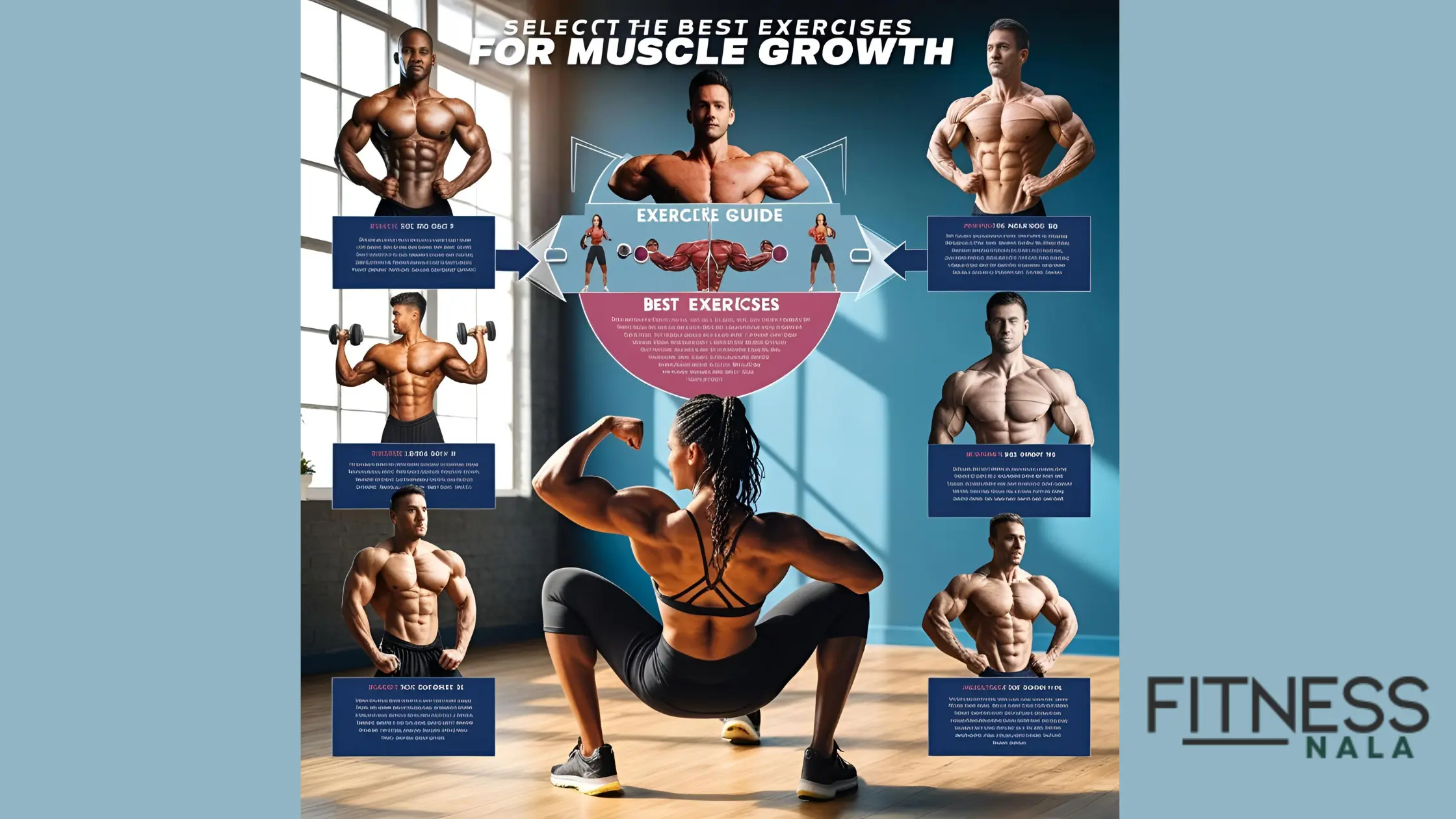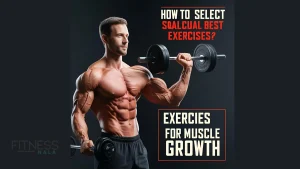Building muscle isn’t just about lifting heavy weights—it’s about lifting the right weights, with the right exercises, in the right way. With so many workouts and movements available, it can be overwhelming to know where to begin. Some believe all exercises are equally effective if performed with intensity, while others search endlessly for the “perfect” movement. The truth? Smart exercise selection plays a major role in hypertrophy (muscle growth).
This guide is your comprehensive, science-backed roadmap to selecting the best exercises to maximize muscle gains.
II. Understand the Goal: What is Muscle Growth (Hypertrophy)?
Muscle hypertrophy is the increase in muscle fiber size due to resistance training. It occurs when the body repairs muscle fibers that have been stressed by training, making them thicker and stronger. It’s distinct from strength training (focused on force output) and endurance training (focused on stamina).
To grow muscle efficiently, we must stimulate it appropriately through strategic exercise selection.
III. Key Principles Behind Exercise Selection
A. Progressive Overload
To grow, muscles must be consistently challenged. Progressive overload means gradually increasing the demands on the muscles over time—through heavier loads, more reps, or shorter rest.
B. Range of Motion (ROM)
Exercises that train muscles through a full, stretched range of motion often yield better growth. For example, Romanian deadlifts stretch the hamstrings more than machine curls.
C. Stability and Loadability
Exercises that provide external support (e.g., a chest-supported row) reduce the need for balance and allow better focus on the target muscle. Loadable exercises (like barbell squats) allow progression with significant weight.
D. Fatigue Management
Pick exercises that stimulate the muscle without draining your nervous system. For instance, front squats may be less systemically fatiguing than deadlifts but still highly effective for quads.
Read more – The Life Changing Magic of Water Running
IV. Types of Exercises: Compound vs Isolation
A. Compound Exercises
These multi-joint movements involve multiple muscle groups. Examples: squats, deadlifts, bench presses.
- Pros: Efficient, heavy load capable, great for building overall mass.
B. Isolation Exercises
Single-joint movements that target one muscle group. Examples: bicep curls, leg extensions.
- Pros: Great for targeting weak points, adding volume, and minimizing systemic fatigue.
C. When to Use Each
Use compound lifts early in your session when energy is high. Use isolation to finish off muscles or address imbalances.
V. Match Exercises to Muscle Function
To build muscle effectively, match exercises to the muscle’s primary function.
| Muscle Group | Function | Example Exercises |
|---|---|---|
| Chest | Horizontal adduction | Bench press, cable flyes |
| Back | Pulling & scapular retraction | Pull-ups, barbell rows |
| Quads | Knee extension | Squats, leg press |
| Hamstrings | Hip extension & knee flexion | RDLs, leg curls |
| Shoulders | Abduction, pressing | Overhead press, lateral raises |
VI. Importance of Variety & Regional Hypertrophy
One exercise rarely stimulates an entire muscle fully. Research shows that different regions of a muscle can grow preferentially depending on the exercise.
- Example: Leg press emphasizes vastus lateralis; leg extension hits rectus femoris more.
Rotating exercises and angles (e.g., incline vs flat press) ensures comprehensive growth and prevents adaptation plateaus.
VII. How Many Exercises per Muscle Group?
- Smaller muscles (e.g., biceps, triceps): 1–2 effective exercises/week may suffice.
- Larger/complex muscles (e.g., back, chest): 2–4 varied exercises/week recommended.
- Aim for 10–20 working sets per muscle per week, spread over 2–4 sessions.
VIII. Customization: Individual Factors That Matter
A. Injury History
Avoid exercises that stress vulnerable joints. Modify or replace with alternatives.
B. Equipment Availability
Don’t have a barbell? Dumbbells, cables, or machines can often replicate key movements.
C. Training Experience
Beginners benefit most from mastering basic compound lifts. Advanced lifters may need more variety and isolation to address weak points.
D. Preference & Mind-Muscle Connection
Exercises that feel good and allow you to “feel” the target muscle often outperform technically superior ones.
IX. Practical Framework to Select Exercises
- Define your goal (e.g., hypertrophy vs strength).
- Choose 1–2 compound lifts per major muscle group.
- Add 1–2 isolation movements to fill in gaps.
- Ensure progression: Track reps, sets, and weights.
- Rotate exercises every 4–8 weeks or when progress stalls.
Example (Upper Body Day):
- Bench Press (Compound)
- Dumbbell Rows (Compound)
- Lateral Raises (Isolation)
- Triceps Pushdown (Isolation)
X. Common Mistakes to Avoid
- Doing too many exercises in one session.
- Skipping progression and sticking with the same weight.
- Choosing flashy over effective (e.g., balancing on a BOSU ball).
- Ignoring form and full range of motion.
Nala guide – Kids Yoga: 6 Fun Poses You Can Do With Your Toddler
XI. FAQs
Q: How many exercises should I do per muscle?
A: 1–2 for small, 2–4 for large muscles weekly. Focus on quality, not quantity.
Q: Is compound or isolation better for hypertrophy?
A: Both have value. Use compounds for mass, isolation for precision and volume.
Q: Can I build muscle with machines only?
A: Yes—especially for beginners or injury rehab. Machines can be effective when programmed well.
Q: How often should I change my exercises?
A: Every 4–8 weeks or when progress stalls.
XII. Conclusion
Selecting the right exercises isn’t about finding the “perfect” movement, but about understanding muscle function, applying key training principles, and listening to your body. By mixing compound and isolation lifts, training muscles through full ranges, and progressing consistently, you can create a program that builds muscle efficiently and sustainably.
Muscle growth is earned through smart training, not just hard training. Now, you’re equipped to train smart.











